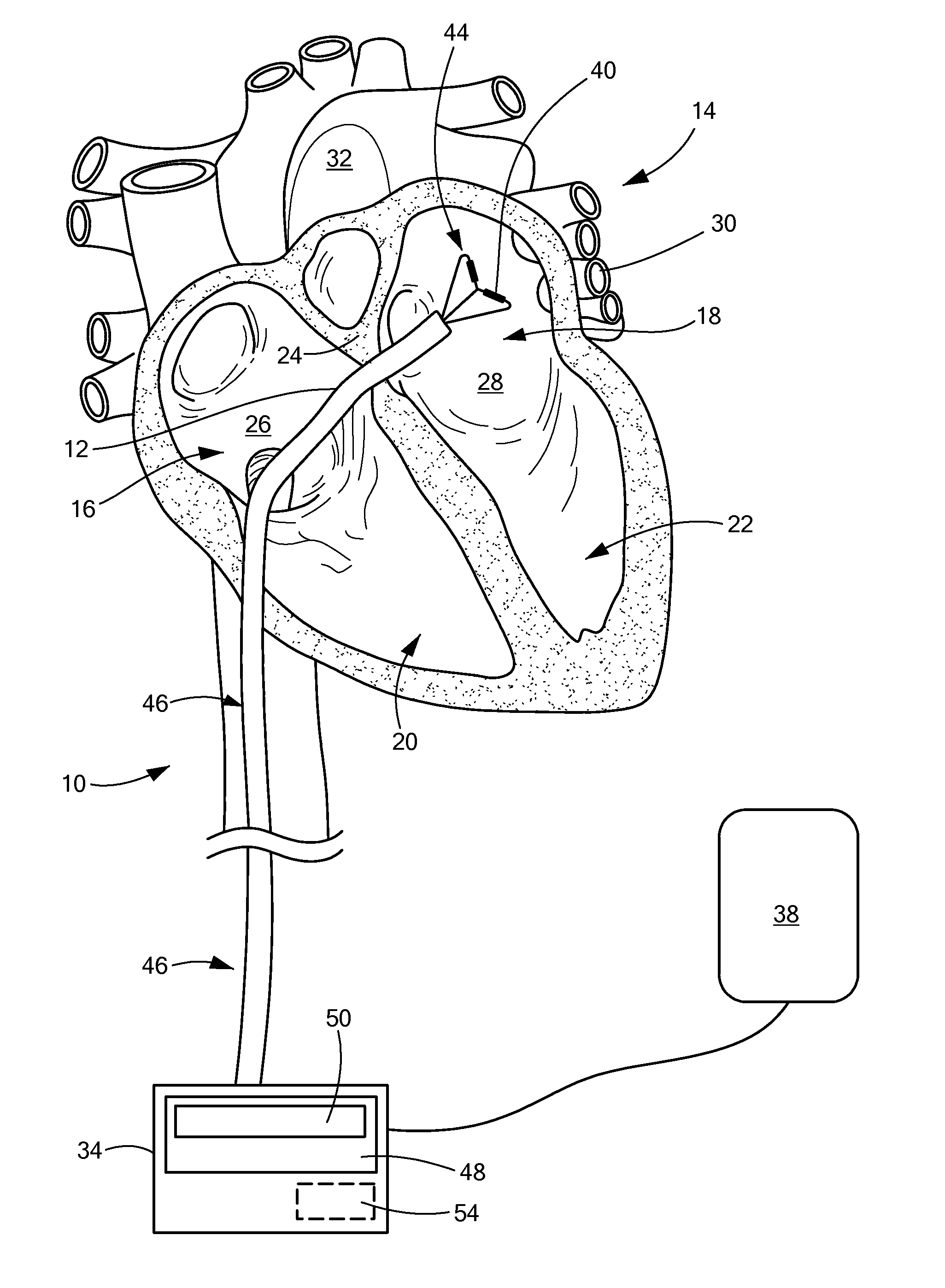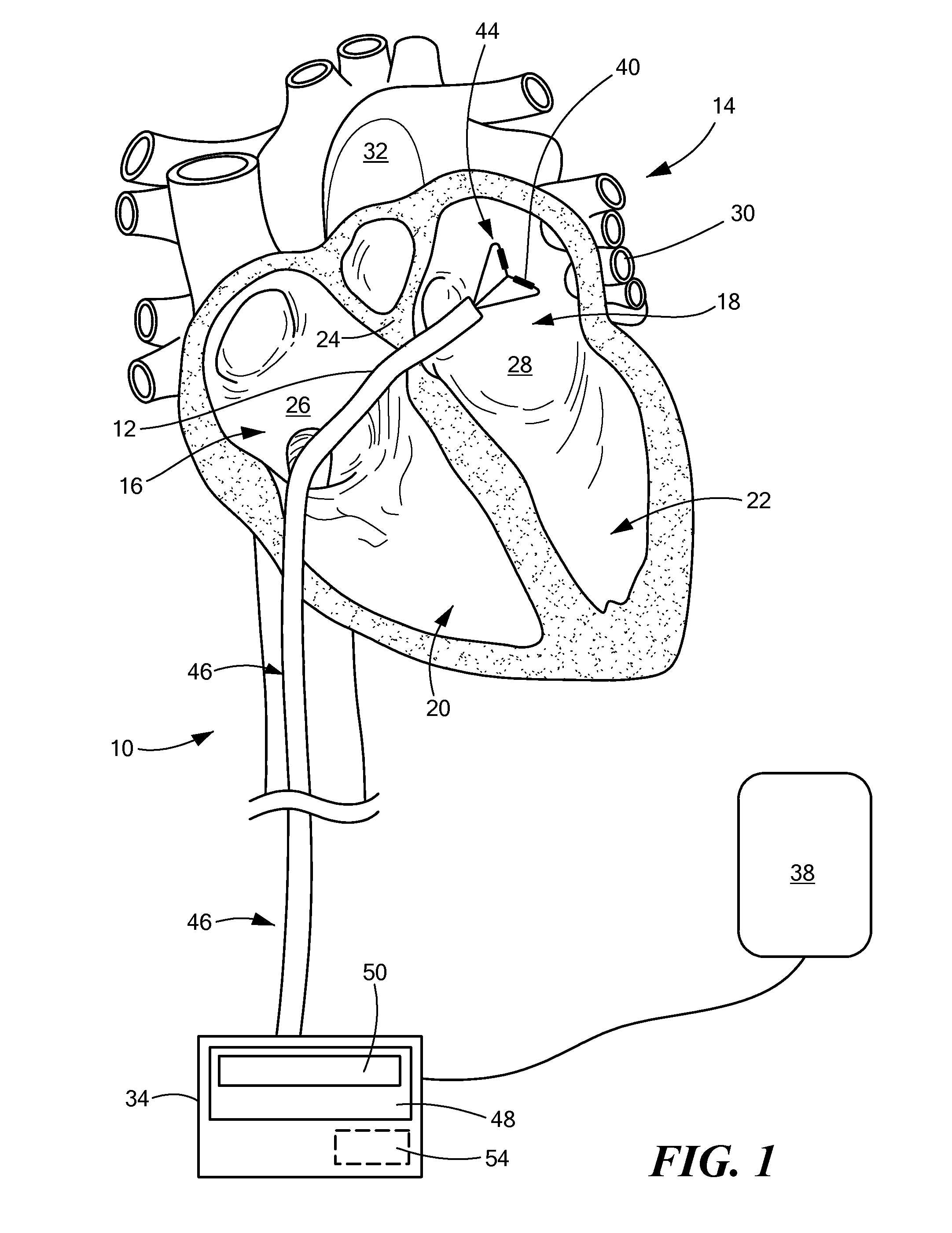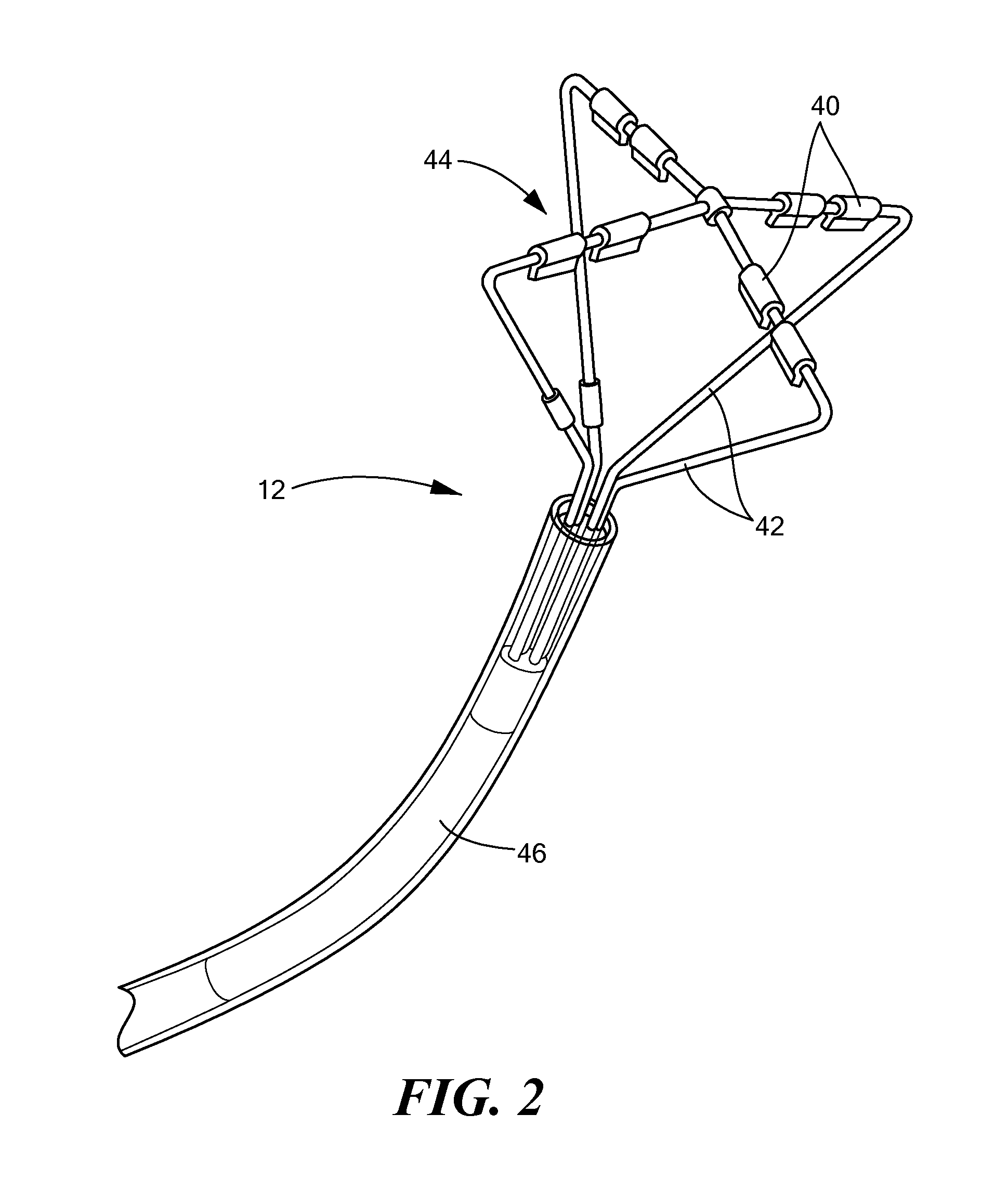Controlled RF energy in a multi-electrode catheter
- Summary
- Abstract
- Description
- Claims
- Application Information
AI Technical Summary
Benefits of technology
Problems solved by technology
Method used
Image
Examples
Embodiment Construction
[0021]Referring now to FIG. 1, an exemplary multi-electrode RF ablation system is shown. The system 10 may be used to treat endocardial surfaces, and the device 12 in FIG. 1 is shown positioned within a heart. However, it will be understood that the system 10 may be used to treat other areas, including epicardial tissue, esophageal tissue, dermal tissue, and any other tissue that is treated with radiofrequency (RF) energy. The cross-sectional view of the heart 14 shows the major structures, including the right atrium 16, the left atrium 18, the right ventricle 20, and the left ventricle 22. The atrial septum 24 separates the right 16 and left 18 atria. In a patient suffering from atrial fibrillation, for example, aberrant electrical conduction may be found in tissue of the atrial walls 26, 28, as well as of the pulmonary veins 30 and the pulmonary arteries 32. Ablation of these areas, which may be referred to as arrhythmogenic foci, drivers, or rotors, may be an effective treatment ...
PUM
 Login to View More
Login to View More Abstract
Description
Claims
Application Information
 Login to View More
Login to View More - R&D
- Intellectual Property
- Life Sciences
- Materials
- Tech Scout
- Unparalleled Data Quality
- Higher Quality Content
- 60% Fewer Hallucinations
Browse by: Latest US Patents, China's latest patents, Technical Efficacy Thesaurus, Application Domain, Technology Topic, Popular Technical Reports.
© 2025 PatSnap. All rights reserved.Legal|Privacy policy|Modern Slavery Act Transparency Statement|Sitemap|About US| Contact US: help@patsnap.com



